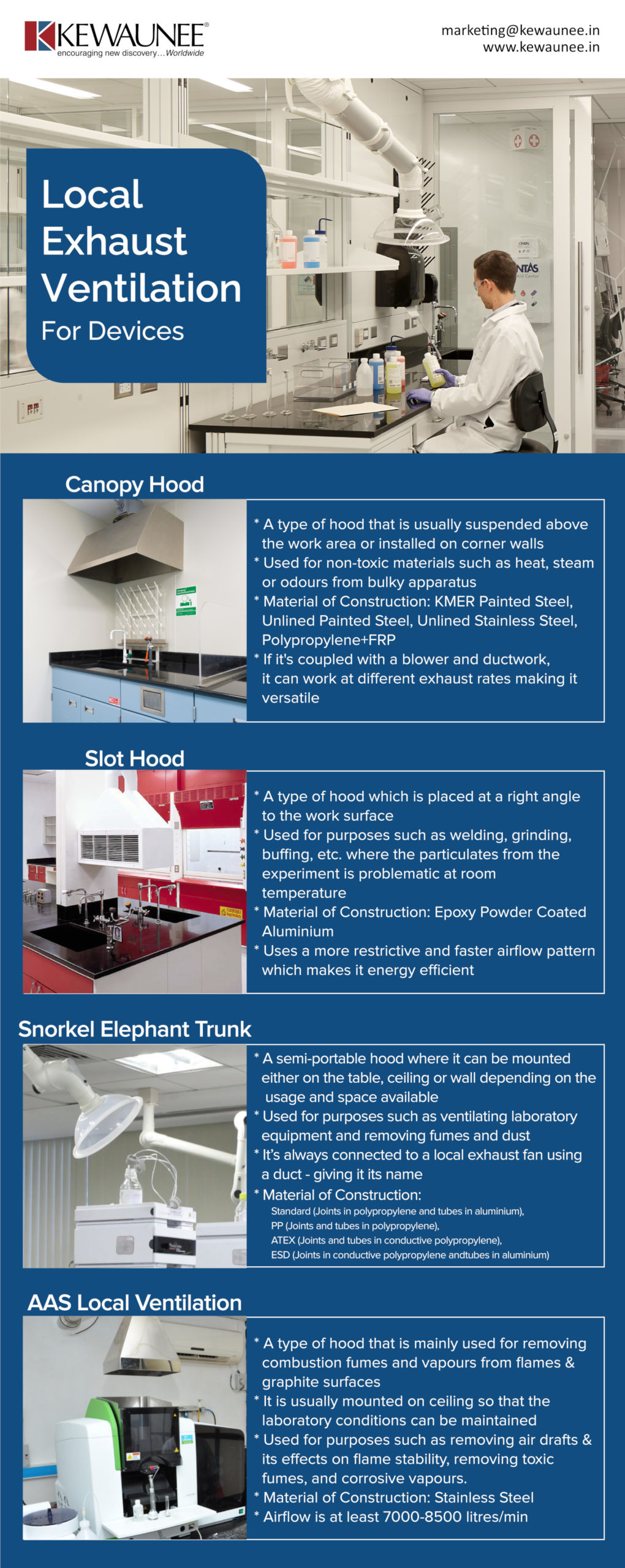Types of Local Exhaust Ventilation Devices
Local Exhaust Ventilation devices are of prime importance in any laboratory. With the varying nature of experiments, it’s essential that they’re installed to not only protect laboratory personnel from harmful contaminants but also ensure that the laboratory conditions are maintained.
At Kewaunee International, we have many LEV devices that you can use to remove any contaminants from your laboratory. You can view our range of products here: https://www.kewaunee.in/local-exhaust-ventilation.php
| Types |
Key Pointers |
| Canopy Hood |
- A type of hood that is usually suspended above the work area or installed on corner walls
- Used for non-toxic materials such as heat, steam, or odours from bulky apparatus
- Material of Construction: KMER Painted Steel, Unlined Painted Steel, Unlined Stainless Steel, Polypropylene + FRP
- If it’s coupled with a blower and ductwork, it can work at different exhaust rates making it versatile
|
| Slot Hood |
- A type of hood which is placed at a right angle to the work surface
- Used for purposes such as welding, grinding, buffing, etc. where the particulate from the experiment is problematic but at room temperature
- Material of Construction: Epoxy Powder Coated Aluminium
- Uses a more restrictive and faster airflow pattern which makes it energy efficient
|
| Snorkel Elephant Trunk |
- A semi-portable hood where it can be mounted either on the table, ceiling or wall depending on the usage and space available
- Used for purposes such as ventilating laboratory equipment and removing fumes and dust
- It’s always connected to a local exhaust fan using a duct — giving it its name
- Material of Construction: Standard (Joints in polypropylene and tubes in aluminium), PP (Joints and tubes in polypropylene), ATEX (Joints and tubes in conductive polypropylene), ESD (Joints in conductive polypropylene and tubes in aluminium)
|
| AAS Local Ventilation |
- A type of hood that is mainly used for removing combustion fumes and vapours from flames & graphite surfaces
- It is usually mounted on ceiling so that the laboratory conditions can be maintained
- Used for purposes such as removing air drafts and its effects on flame stability, removing toxic fumes, and corrosive vapours.
- Material of Construction: Stainless Steel
- Airflow is at least 7000-8500 litres/min
|
Kewaunee, the global leader in total laboratory solutions, empowers organisations to achieve competitive advantage through safe, efficient, and contemporary laboratories. In existence since 1906, Kewaunee powers the laboratories for over 5,000 customers in more than 100 countries.











